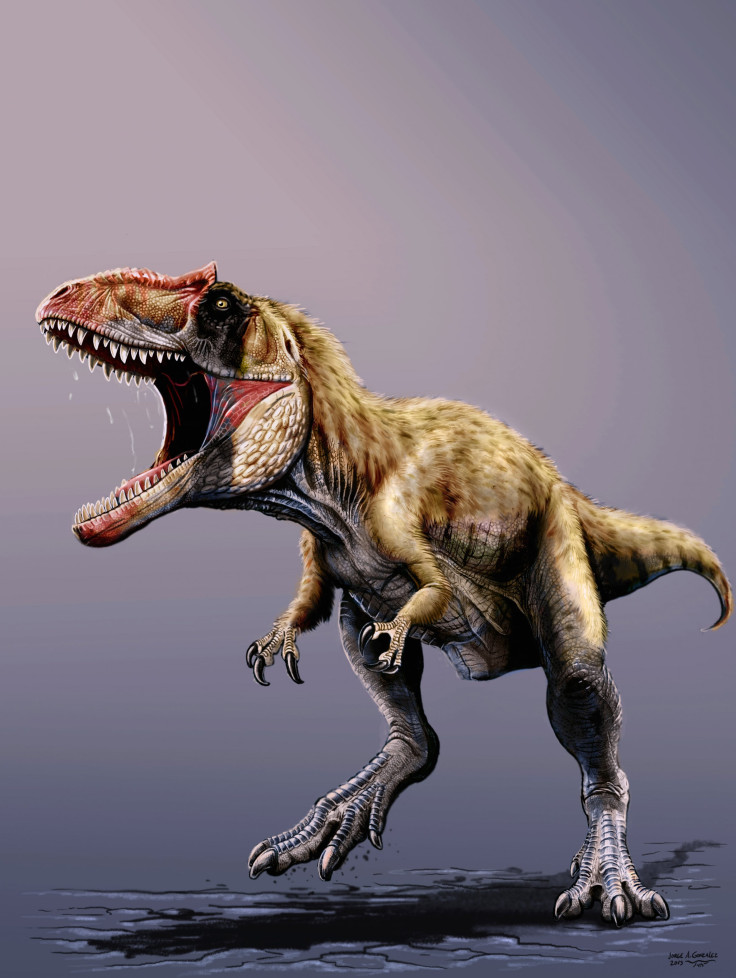New Dinosaur ‘Siats Meekerorum’ Discovered, Kept Early Tyrannosaurs ‘In Check’ [PHOTO]

A new species of dinosaur discovered in Utah is believed to be the third-largest predator found in North America.
Named Siats meekerorum, after the man-eating monster from the Ute tribal legend, the fossil belongs to a species of giant meat eaters known as carcharodontosaurs and is the second one discovered in North America.
“This thing is gigantic,” Lindsay Zanno, a paleontologist at North Carolina State University, who discovered the species, told Wired. “There’s simply nothing even close in this ecosystem to the size of this animal that could’ve been interpreted as an apex predator.”
The dinosaur was discovered in 2008 by Zanno and her colleague Peter Makovicky, from Chicago’s Field Museum of Natural History. The pair found a partial skeleton of the predatory dinosaur in Utah’s Cedar Mountain Formation.
“It’s been 63 years since a predator of this size has been named from North America,” Zanno, the lead author of a Nature Communications paper describing the find, said in a statement. “You can’t imagine how thrilled we were to see the bones of this behemoth poking out of the hillside.”
While the specimen was a juvenile that measured 30 feet long and weighed 9,000 pounds, the paleontologists estimate a full-grown Siats could have weighed up to 11,000 pounds, Discovery News reports.
"Siats still had a lot of room to grow, and there is only a 4-inch difference between the estimated femur length of a juvenile Siats and an adult Acrocanthosaurus (the second-largest predator in North America), so we think a safe estimate for an adult Siats is that it at least vied with Acrocanthosaurus (11,000 pounds) for the No. 2 slot," Zanno said.
Siats roamed modern-day Utah during the Late Cretaceous period -- about 98 million years ago -- and was the top meat eater during that time.
The discovery may help explain the 30 million-year gap of fossil records, where the top-predator place changed hands from carcharodontosaurs in the Early Cretaceous to tyrannosaurs in the Late Cretaceous.
While paleontologists are unsure of when the change took place, it’s clear that the Siats’ massive size kept them on top of the food chain.
“The huge size difference certainly suggests that tyrannosaurs were held in check by carcharodontosaurs, and only evolved into enormous apex predators after the carcharodontosaurs disappeared,” Makovicky said.
The Siats’ habitat was filled with abundant vegetation, water and a bunch of herbivores, turtles, crocodiles and lungfish to prey on. Early tyrannosaurs and other dinosaur species also shared a space with the Siats, leading scientists to believe there are more dinosaur species yet to be discovered.
“Stay tuned,” Zanno said. “There are a lot more cool critters where Siats came from.”
© Copyright IBTimes 2025. All rights reserved.





















